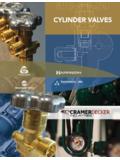Transcription of Ten Things Everyone Should Know About …
1 Ten Things Everyone Should know About lockpicking & Physical Security Deviant Ollam Physical security is an oft-overlooked component of data and system security in the technology world. While frequently forgotten, it is no less critical than timely patches, appropriate password policies, and proper user permissions. You can have the most hardened servers and network but that doesn't make the slightest difference if someone can gain direct access to a keyboard or, worse yet, march your hardware right out the door. These ten general points will give you a solid overview of the weaknesses in many security designs as well as an understanding of how certain (often very small) changes to how locks operate and are utilized can make a huge difference in the security of your facilities as well as your data.
2 1. Locks are not complicated mechanisms In general, locks are very simplistic devices that are employed to address very a straightforward problem. When areas or objects require security (which is most often defined as keeping unauthorized people out ) there is a very simple and ideal solution installing them within an ultra-hardened structure constructed out of reinforced concrete and metal cladding with no doors, windows, or other openings. This is impractical in the real world, however, because in life our goal isn't simply keeping unauthorized people out but also occasionally allowing authorized people in.
3 A hallway can have a huge wall of stone stacked from floor to ceiling. This will prevent unauthorized passage. If constructed without mortar it can be disassembled to allow the periodic travel of someone with permission to pass through. However, again we see a flaw requiring a refined definition. What we really want, of course, is a way to keep unauthorized people out while letting authorized people in with a minimum of hassle, cost, and effort in the process of securing or opening such clearance. That is, at its most basic, the purpose locks serve in our lives they are a way to provide (in theory) rapidly-deployed and easily-removed barricades that alternately restrict or allow easy passage or access to a sensitive resource.
4 All locks (even the bad ones) do this with amazing efficiency. Their designs are not complicated, and by looking at some internal diagrams we can take a lot of the mystery out of these devices. When viewing a typical lock from the outside, this is often the perspective that we can see. Within the lock's main body housing there is a round plug. This plug is what turns during the successful operation of the lock. On a the most conventional locks, there will be a hole called a keyway, into which a physical token is inserted by the user. Often, if you peer directly into the keyway, it is possible to see at least the tip of one of the many pins that sit within most locks.
5 If viewed in a cut-away fashion, this is how most locks would appear. There is, in fact, not a single pin but rather there are two pins sitting atop one another. The bottom pin (also called the key pin ) appears in red in this diagram. The top pin (also called the driver pin ) is shown in blue. As you can see, when the pins are at rest and hanging fully-down (springs atop the pin stack apply pressure keeping the pins down unless something specifically lifts them) the plug cannot be turned, since the driver pin is binding and in the way. If the correct key is inserted into the lock, however, the pin stack will be lifted to the right amount and the space in between the two pins will be at the height of the shear line which allows the plug to turn.
6 Now, in an actual lock there is not just a single key pin and driver pin. There are multiple pin stacks, each of which needs to be raised to the proper height in order to prevent the drivers from binding. When the blade of the proper key is inserted, the bottom pins will ride along the cuts on the key (known as the bitting ) and lift the stacks correctly. 2. Most locks are wildly easy to pick In theory, the more pin stacks a lock has, the more secure it Should be. More stacks means more possible key variations and greater difficulty in getting all the pins to raise properly. This is not entirely the case, however.
7 Basic flaws that are present in nearly all lock designs make it possible to attack the pin stacks one at a time, allowing someone to compromise the lock regardless of how many pins it contains. If pictured from above, most people would assume that during its construction, the pin chambers are drilled in a very regular pattern evenly-spaced and in a straight line. This would result in perfectly-aligned pin stacks, and if someone attempted to rotate the plug without using the correct key, all the driver pins would simultaneously bind . and prevent the plug's movement. This is the goal, but manufacturing processes are often less than perfect.
8 In reality, there are almost always imperfections in the alignment of the pin chambers. While this diagram is perhaps a bit exaggerated, the misalignment can be very profound in locks manufactured on a low budget. The machine tolerances at some factories are very poor. In situations like this, attempts to rotate the plug will still fail, but it is only one of the pin stacks that is holding the plug in place. Because only one pin is ever really binding at a time, it is possible to attack the lock one pin at a time. lockpicking is performed by applying a bit of torsion pressure on the plug (typically with a tool called a wrench) which causes at least one driver to bind.
9 Then, the whole pin stack can be gradually lifted (using another tool, simply called a pick). If the lifting is done precisely and methodically, eventually the stack will be at a height where the pins are perfectly aligned at the shear line. When this happens, the driver pin will no longer be binding. If there is still pressure being applied with the wrench, the plug will rotate slightly. Then the lifted driver pin will typically hang on the lip of the lower pin chamber and another pin stack will be in a position to bind. The process can then be repeated with other pin stacks. A lockpicker can apply some torsion with a wrench and then methodically lift the pin stacks, sometimes finding binding stacks and setting them to the appropriate height.
10 When all stacks have finally been lifted correctly, the plug is free to fully turn. The two biggest errors that people make when attempting to pick involve the use of too much force. Too much torsion pressure with the wrench will bind the pins too hard and make lifting the stacks difficult. Lifting the pins too high will raise the bottom pin up into the shear line and not allow the plug to rotate. If this happens, the only way to proceed is to release torsion pressure (allowing all pins to fall back down) and start over. In addition to the methodical pin by pin picking technique, there are other ways to attack the pin stacks.













